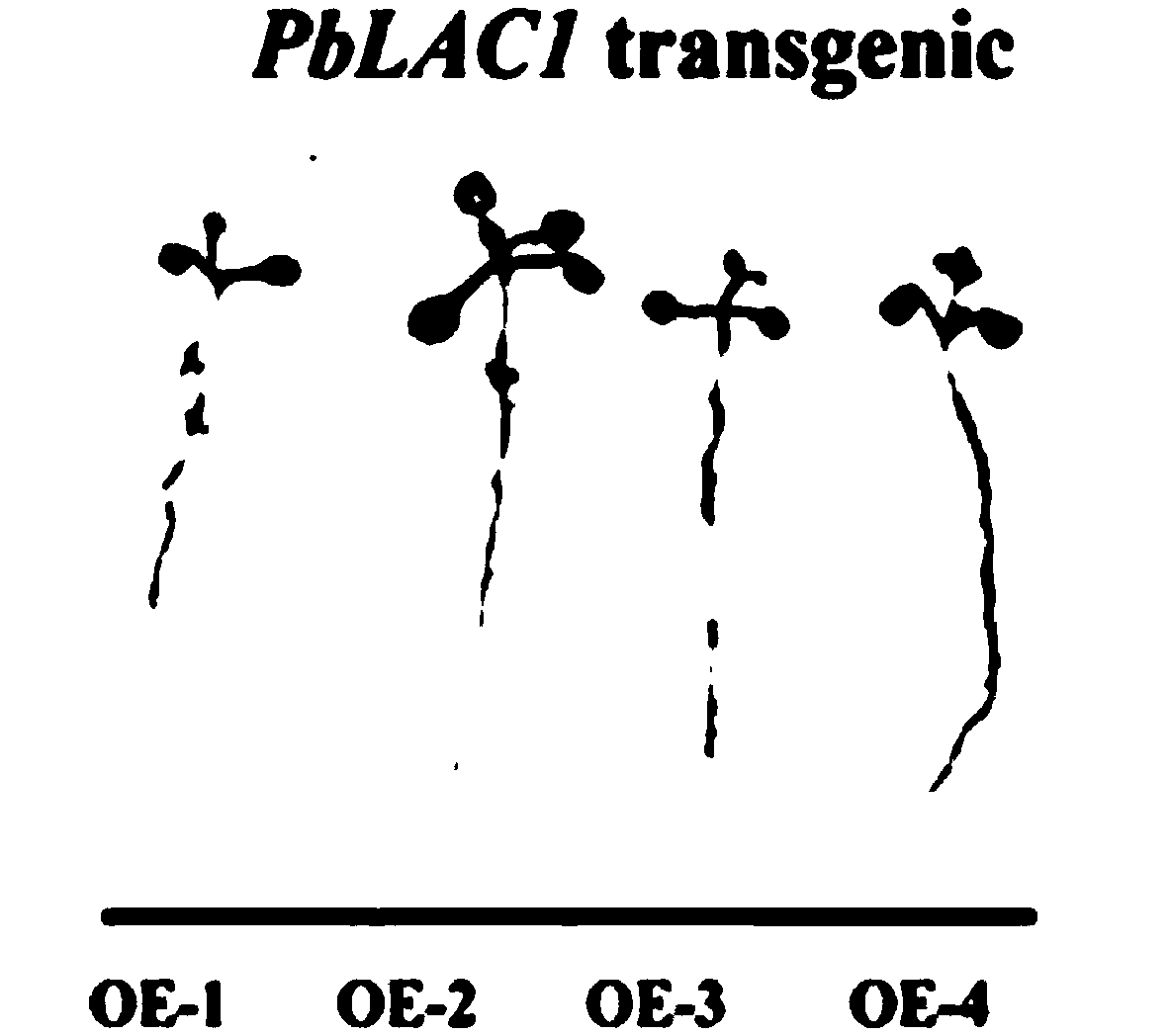Pear laccase gene PbLAC1 and vector, host cell and application thereof
A technology of host cell and pear laccase, which is applied in the field of plant molecular biology and genetic engineering, can solve problems such as unclear function, achieve the effect of improving fruit quality, improving internal and appearance quality, and increasing lignification degree
- Summary
- Abstract
- Description
- Claims
- Application Information
AI Technical Summary
Problems solved by technology
Method used
Image
Examples
Embodiment 1
[0036] A pear laccase gene PbLAC1 in this example, the cloning steps are as follows: select the fruit of Dangshansu pear about 39 days after flowering, extract the total RNA and reverse transcribe it into cDNA, and then design specific amplification primers according to the published pear genome sequence PbLAC1-F and PbLAC1-R, and use cDNA as a template for PCR amplification, followed by recovery of PCR products and connection to pMD-18T vector; wherein, the nucleotide sequences of specific amplification primers PbLAC1-F and PbLAC1-R They are respectively shown in SEQ ID NO.3 and SEQ ID NO.4.
[0037] The specific cloning process is as follows:
[0038] (1) Take 1 μg (2 μL) of total RNA, add 2 μL 5×gDNA Buffer, 2 μL 10× Fast RT Buffer, 1 μL RT Enzyme Mix, 2 μL FQ-RT Primer Mix, 11 μL RNase-Free ddH 2 O, mix carefully, incubate at 42°C for 15 minutes, then incubate at 95°C for 3 minutes, and place on ice for 5 minutes to obtain the corresponding reverse transcription product c...
Embodiment 2
[0043] Construction of a PbLAC1 overexpression vector and host cell of the present embodiment:
[0044] (1) Design primers PbLAC1-ZH-F and PbLAC1-ZH-R with Bgl II and Nco I restriction sites according to the sequence of the target gene PbLAC1 that has been successfully cloned, and use the constructed pMD-18T-PbLAC1 plasmid as a template Amplify, and after the PCR product is detected by 1% agarose gel electrophoresis, the target fragment is recovered and connected to the vector pMD-18T for sequencing; among them, the primer PbLAC1 with Nco I and Bgl II restriction sites The nucleotide sequences of -ZH-F and PbLAC1-ZH-R are respectively shown in SEQ ID NO.5 and SEQ ID NO.6.
[0045] (2) Use restriction endonucleases Bgl II and Nco I to carry out double enzyme digestion on the pMD-18T-PbLAC1 plasmid and the plant expression vector pCambia1304 plasmid respectively; use 1% agarose gel electrophoresis to recover the target fragment PbLAC1 and plant expression vector pCambia1304; wi...
Embodiment 3
[0048] Construction of a PbLAC1 overexpression Arabidopsis strain of this embodiment:
[0049] (1) Prepare the infection solution:
[0050] After the host cells obtained in Example 2 are activated, they are resuspended with a buffer to obtain an infection solution; wherein, the buffer is specifically a 1 / 2MS liquid containing 5% sucrose and 0.02% Silwet L-77 by mass ratio Medium, OD of infection solution 600 The value is 0.5 to 0.8.
[0051] (2) Genetic transformation of Arabidopsis:
[0052] This was accomplished using the Agrobacterium-mediated flower dip method.
[0053] (3) Screening of transgenic plants:
[0054] Will T 0 The generation seeds were sterilized and inoculated into MS solid screening medium containing 50mg / L hygromycin, cultured in a light incubator, and the light time was controlled to be 16h / d; the results showed that the non-transgenic plants turned yellow and stopped growing, Only transgenic plants can grow.
[0055] (4) Identification of positive ...
PUM
 Login to View More
Login to View More Abstract
Description
Claims
Application Information
 Login to View More
Login to View More - R&D
- Intellectual Property
- Life Sciences
- Materials
- Tech Scout
- Unparalleled Data Quality
- Higher Quality Content
- 60% Fewer Hallucinations
Browse by: Latest US Patents, China's latest patents, Technical Efficacy Thesaurus, Application Domain, Technology Topic, Popular Technical Reports.
© 2025 PatSnap. All rights reserved.Legal|Privacy policy|Modern Slavery Act Transparency Statement|Sitemap|About US| Contact US: help@patsnap.com



